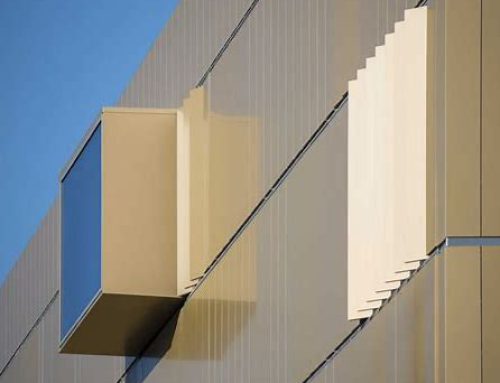Execution of handrails in the form of burial and facing

Execution of handrails in the form of burial and facing ,In the realm of craftsmanship and cultural heritage, few elements are as emblematic and essential as handrails. Beyond their practical function of guiding and supporting, handrails embody centuries-old traditions and symbolism that extend far beyond their physical form. Among the various contexts in which handrails hold profound significance, their execution in burial and facing rituals stands out as a testament to human ingenuity and reverence for tradition.
A Heritage of Craftsmanship
Handrails, often crafted from wood, metal, or stone, serve a dual purpose in architectural design. They provide stability and safety while also adorning spaces with their aesthetic appeal. Yet, in the realm of burial sites and facing rituals, their role transcends mere utility. These installations are crafted with meticulous attention to detail, reflecting both the cultural and spiritual beliefs of the communities that create them.
Symbolism and Spiritual Significance
The execution of handrails in burial and facing rituals varies greatly across cultures and regions. In many societies, the act of crafting and installing handrails is laden with symbolism. They may represent a passage between the earthly realm and the spiritual world, guiding departed souls on their journey. The materials chosen for handrails often carry symbolic weight as well, embodying values such as strength, resilience, and continuity.
Artistry in Design
Beyond their symbolic importance, handrails in burial and facing rituals showcase exquisite craftsmanship and design. Artisans often employ intricate patterns, carvings, or engravings that reflect cultural motifs or religious symbols. These designs not only beautify the physical space but also serve to honor the memory of the departed and commemorate their lives.
Cultural Variations
The execution of handrails in burial and facing rituals varies widely across different cultures and traditions. In some cultures, handrails are prominently featured in mausoleums, crypts, or gravesites, where their design harmonizes with the surrounding architecture. In others, handrails may be erected temporarily during funeral ceremonies or as part of ritualistic practices that honor ancestors.
Continuity and Evolution
Despite their ancient origins, the execution of handrails in burial and facing rituals continues to evolve. Modern interpretations may blend traditional craftsmanship with contemporary design principles, catering to changing tastes while preserving cultural authenticity. This evolution underscores the adaptive nature of cultural practices, ensuring that handrails remain relevant symbols of respect and remembrance in an ever-changing world.
Challenges and Preservation
While handrails in burial and facing rituals hold deep cultural significance, their preservation faces challenges in the modern world. Urbanization, environmental factors, and economic pressures often threaten the maintenance of historical burial sites and traditional craftsmanship. Efforts to preserve these handrails involve a delicate balance between conservation and adaptation, ensuring their integrity while accommodating evolving cultural practices and beliefs.
Cultural Heritage Conservation
Organizations and communities dedicated to cultural heritage conservation play a crucial role in safeguarding handrails in burial and facing rituals. They collaborate with artisans, historians, and local communities to document traditional techniques, promote sustainable practices, and raise awareness about the importance of preserving these cultural treasures. Through these efforts, future generations can continue to appreciate and learn from the rich symbolism and craftsmanship embedded in handrails.
Global Perspectives and Unity
The significance of handrails in burial and facing rituals transcends geographic boundaries, reflecting universal themes of respect for the deceased, continuity of traditions, and spiritual reverence. By studying and celebrating diverse cultural practices surrounding handrails, societies around the world can foster greater understanding and respect for each other’s heritage. This global perspective encourages collaboration in preserving and interpreting these rituals, enriching the collective tapestry of human cultural expression.
Innovation and Adaptation
Innovation plays a pivotal role in the preservation and adaptation of handrails in burial and facing rituals. Contemporary artisans and designers draw inspiration from traditional craftsmanship while incorporating modern materials and techniques. This approach ensures that handrails not only retain their cultural authenticity but also meet contemporary standards of durability and aesthetic appeal. Innovations in conservation practices, such as digital documentation and sustainable materials, further contribute to the long-term preservation of these cultural artifacts.
Community Engagement and Education
Engaging local communities and educating the public about the significance of handrails in burial and facing rituals is crucial for their continued preservation. Community involvement fosters a sense of ownership and pride in cultural heritage, encouraging active participation in conservation efforts. Educational initiatives, such as workshops, exhibitions, and interpretive programs, help raise awareness about the historical, artistic, and spiritual dimensions of handrails. By nurturing a deeper understanding of these traditions, communities can work together to ensure their enduring legacy for future generations.
Ethical Considerations and Respect
Respectful treatment of burial sites and ritual spaces is paramount in the preservation of handrails. Cultural sensitivity and ethical practices should guide interactions with these sacred places, honoring the beliefs and customs of the communities they represent. Collaboration with local stakeholders, including indigenous groups and religious authorities, ensures that preservation efforts are conducted with integrity and mutual respect.
Future Directions and Sustainability
Looking ahead, sustainable practices will be essential in the preservation and maintenance of handrails in burial and facing rituals. Adopting eco-friendly materials, implementing conservation strategies, and promoting responsible tourism are vital for mitigating environmental impacts while safeguarding cultural heritage. Embracing technological advancements, such as 3D scanning and virtual reality, offers innovative ways to document, study, and experience these historical artifacts without compromising their physical integrity.
Global Awareness and Advocacy
Advocacy at the international level plays a crucial role in promoting the preservation of handrails and other cultural artifacts associated with burial and facing rituals. Collaborative efforts among governments, non-governmental organizations, and cultural institutions can advocate for policies that prioritize heritage conservation and support sustainable development practices. By advocating for the protection of these invaluable cultural assets, global communities can collectively ensure their continued significance and accessibility for future generations.
Continued Relevance and Adaptation
The enduring relevance of handrails in burial and facing rituals lies in their ability to adapt to changing societal contexts while maintaining core cultural values. As communities evolve, so too do the meanings and practices associated with these rituals. Modern interpretations may incorporate new materials, designs, or symbolic elements that resonate with contemporary sensibilities while honoring ancestral traditions. This adaptive approach ensures that handrails remain dynamic symbols of cultural identity and continuity.
Reflection of Identity and Belonging
Handrails in burial and facing rituals also reflect broader concepts of identity and belonging within communities. They serve as tangible markers of cultural heritage and ancestral ties, connecting individuals to their roots and collective histories. Through these rituals, communities affirm their shared values, beliefs, and traditions, fostering a sense of unity and belonging among generations past, present, and future.
Healing and Commemoration
Beyond their symbolic and aesthetic roles, handrails in burial and facing rituals play a significant role in processes of healing and commemoration. These installations provide sacred spaces where families and communities can gather to honor the lives of loved ones, find solace in shared memories, and seek comfort amidst grief. The act of crafting and installing handrails becomes a profound expression of respect and reverence, ensuring that the legacies of the departed endure through time.
Spiritual Significance and Ritual Practice
In many cultures, the execution of handrails is intertwined with intricate ritual practices that imbue these installations with spiritual significance. Rituals surrounding burial and facing rituals often involve prayers, blessings, or ceremonial gestures that sanctify the space and facilitate the transition of the deceased to the afterlife. Handrails serve as conduits for these spiritual energies, embodying the sacred connections between the earthly realm and realms beyond.
Legacy and Preservation
Preserving handrails in burial and facing rituals involves a dual commitment to safeguarding physical artifacts and honoring intangible cultural heritage. Documentation, conservation efforts, and sustainable practices are essential in maintaining the integrity and authenticity of these rituals for future generations. By safeguarding handrails, communities uphold their responsibility as stewards of cultural legacy, ensuring that these traditions continue to inspire, educate, and enrich the human experience.
Challenges and Opportunities
While the execution of handrails in burial and facing rituals holds deep cultural and spiritual significance, it also faces challenges in the modern era. Urbanization, development pressures, and environmental factors threaten the preservation of traditional burial sites and the craftsmanship associated with them. Additionally, socioeconomic changes and demographic shifts can impact community practices and attitudes towards these rituals.
However, these challenges also present opportunities for innovation and collaboration. Initiatives aimed at sustainable development, heritage conservation, and community engagement can help mitigate these threats. By fostering partnerships between local communities, governmental bodies, academic institutions, and cultural organizations, it becomes possible to develop holistic approaches to safeguarding handrails and their associated rituals. These efforts not only ensure the physical preservation of cultural artifacts but also promote social cohesion and economic resilience within communities.
Global Impact and Cultural Exchange
The significance of handrails in burial and facing rituals extends beyond individual communities to contribute to global cultural heritage. In an interconnected world, awareness and appreciation of diverse cultural practices foster mutual respect and understanding among societies. Cultural exchange programs, educational initiatives, and international collaborations play crucial roles in promoting cross-cultural dialogue and preserving shared human heritage.
Through these interactions, societies can learn from one another’s traditions, adapt best practices in conservation and interpretation, and celebrate the richness of cultural diversity. By recognizing the universal themes of loss, remembrance, and resilience embodied in handrails, global communities can unite in honoring the human experience and affirming the intrinsic value of cultural heritage.
Future Directions and Sustainability
Looking ahead, the future of handrails in burial and facing rituals hinges on sustainable practices and inclusive approaches to cultural heritage preservation. Embracing technological advancements, such as digital documentation and virtual reality reconstructions, offers innovative ways to safeguard and interpret these rituals without compromising their authenticity. Furthermore, integrating traditional knowledge with contemporary conservation methods ensures that handrails remain relevant and resilient in the face of evolving societal and environmental challenges.
Educational programs and public outreach initiatives are essential in nurturing appreciation for handrails and their cultural significance among younger generations. By empowering communities to take pride in their heritage and participate in its preservation, these efforts contribute to the continuity and vitality of cultural traditions over time.
Adaptive Preservation and Cultural Resilience
The execution of handrails in burial and facing rituals epitomizes cultural resilience and adaptive preservation. These rituals, rooted in ancient traditions, continue to evolve to meet the needs and values of contemporary societies. By adapting materials, designs, and practices while honoring their historical significance, communities demonstrate their ability to maintain cultural continuity amidst a changing world.
Through adaptive preservation efforts, communities ensure that handrails remain meaningful symbols of respect and remembrance. Whether through restoration projects, educational programs, or sustainable tourism initiatives, these efforts uphold the integrity of cultural heritage while promoting its appreciation and understanding among diverse audiences.
Legacy and Intergenerational Transmission
Handrails in burial and facing rituals serve as conduits for intergenerational transmission of knowledge, values, and traditions. They carry forward the stories and identities of past generations, providing a tangible link between ancestors and descendants. By engaging youth in the preservation and interpretation of these rituals, societies cultivate a sense of pride and responsibility in their cultural heritage, ensuring its vitality for generations to come.
Continued Reverence and Cultural Evolution
The execution of handrails in burial and facing rituals continues to evolve, reflecting shifts in cultural practices, beliefs, and societal norms. While rooted in ancient traditions, these rituals adapt to contemporary contexts, embracing new interpretations and expressions of cultural identity. This evolution ensures that handrails remain relevant symbols of respect and spiritual guidance, resonating with diverse communities worldwide.
Global Perspectives and Collaboration
The global significance of handrails in burial and facing rituals underscores their role as universal symbols of humanity’s shared experiences of loss, remembrance, and resilience. By studying and celebrating diverse cultural practices surrounding handrails, societies foster greater cross-cultural understanding and empathy. International collaborations in heritage conservation and cultural exchange further promote dialogue and cooperation, enriching global appreciation for these timeless rituals.
Call to Action: Preservation and Appreciation
Preserving the execution of handrails in burial and facing rituals requires collective action and commitment. Communities, governments, academics, and cultural institutions must collaborate to safeguard these cultural treasures from threats such as urbanization, climate change, and neglect. By implementing sustainable conservation practices, promoting educational initiatives, and advocating for ethical stewardship, societies can ensure the continuity of these rituals for future generations.
Embracing Heritage and Innovation
The execution of handrails in burial and facing rituals serves as a bridge between past traditions and future aspirations. It embodies the essence of craftsmanship, cultural identity, and spiritual symbolism that transcend generations. While honoring the timeless rituals associated with handrails, communities also embrace innovation and adaptation to ensure their relevance in contemporary society.
By blending traditional techniques with modern technologies and sustainable practices, artisans and conservationists uphold the integrity of these cultural artifacts. Through collaborative efforts and community engagement, they promote awareness, appreciation, and respect for the heritage embedded in handrails. This approach not only preserves physical structures but also fosters a deeper understanding of the values and beliefs that underpin these rituals.
Final Thoughts
In conclusion, the execution of handrails in burial and facing rituals transcends their functional purpose to embody profound cultural, spiritual, and artistic significance. These installations serve as enduring symbols of respect, continuity, and communal identity, connecting individuals across time and space. By honoring and preserving these rituals, we preserve not only tangible artifacts but also intangible cultural heritage that enriches our understanding of the human experience.
As we navigate an increasingly interconnected world, let us cherish and celebrate the diversity of cultural practices that define us. Through mutual respect, collaboration, and preservation efforts, handrails in burial and facing rituals will continue to inspire reverence, foster resilience, and unite humanity in a shared commitment to honoring our past and shaping our future.
Execution of handrails in the form of burial and facing , Execution of handrails in the form of burial and facing , Execution of handrails in the form of burial and facing , Execution of handrails in the form of burial and facing.





Leave A Comment